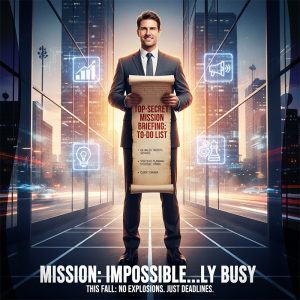
December Business Playbook: Retain Clients & Boost Revenue
Prepare Your Business for Q1 2026 December is not just
By Nadia Bulcourt – October 8, 2024
In an ever-changing business environment, collaboration between sales and marketing teams has never been more essential. Yet this collaboration is often undermined by differences of vision or divergent priorities. While marketing is the strategic engine that structures the overall approach, the sales force is the executor in the field.
But what happens when these two departments, which are supposed to be complementary, stop communicating or drift apart? The answer is simple: performance plummets. This article proposes to act and explore concrete ways to strengthen this collaboration, far from complex theories and purely digital tools.
It’s not just sales-marketing collaboration. There have been many novels and papers written about this. What we’re interested in today, in less than five minutes, is talking about concrete actions, about the collaboration of sales and marketing teams moving forward together.
In a company, the role of marketing is to structure a global strategy, while sales teams deploy it in the field. Alignment between these two entities is therefore essential to guarantee smooth, efficient execution.
Marketing designs the strategy, but it’s up to the sales teams to translate it into concrete action in the field. When both teams work hand in hand, results are often optimized.
Unfortunately, in the real world, marketing and sales teams can sometimes drift apart, holding back each other’s performance. This can be due to differing priorities, a lack of communication, or an uneven understanding of common objectives.
The emergence of digital tools has profoundly transformed marketing, making it both more technical and more complex. But this increased digitalization must not prevent the implementation of concrete, sometimes basic, but equally effective actions.
With the multiplication of digital tools and the rise of technical skills, marketing has become a highly specialized field. However, this technical expertise can sometimes distance teams from the practical actions that are so essential.
The idea is to refocus on simple, concrete collaborations, independently of digital tools. By temporarily forgetting this digitalized world, teams can rediscover a more direct and human interaction.
The idea behind collaboration is to say: “How can we collaborate on practical, concrete things, and forget about this slightly out-of-touch digital world?”
Let’s take a concrete example: the illustration created to materialize marketing visibility. I asked you to help me visualize marketing visibility in a pretty diagram. And you came up with this diagram, which I think is great. In fact, on LinkedIn, we saw that a lot of people thought it was cool.
The hand-drawn diagram stood out for its simplicity and impact. Unlike presentations that are often overly technical and standardized, this approach made all the difference and resonated with many customers and prospects.
In this example, a need expressed by the sales team was considered by the marketing department, demonstrating genuine collaboration between the two teams. This illustration made it possible to convey a clear, visible, and effective message, while humanizing the approach.
Today, you must know how to differentiate yourself. Everyone can make pretty slides and having a very product-driven offer. In the age of AI and all the tools that will enable automation, it’s important to differentiate oneself in a human way.
For me, this is the first clear example: a diagram that has been drawn up by a human being, who has thought about the business case and materialized it with his pencil. It’s hyper-differentiating, it’s directly actionable marketing.
Another example of collaborative action is the regular updating of sales reps’ signatures. This simple task, which involves adding a link to an upcoming event, is often overlooked, even though it can generate engagement and visibility.
Here we’re talking about medium-term marketing, unlike the first example, which was more about short-term action.
Marketing can play a key role here by providing sales teams with an up-to-date template, which they can then easily integrate into their emails. This action, though basic, demonstrates the importance of coordination between the two departments over the medium term.
Consequently, collaboration between sales and marketing teams does not require major upheavals, but rather a focus on simple, concrete actions. Initiatives such as those described here can make a significant contribution to improving overall company performance.
To find out more, we invite you to read our article “4 actions with immediate impact to boost your sales in 6 months”.

Prepare Your Business for Q1 2026 December is not just

Between strategy, leadership, and delegation, learn how CEOs can transform their overwhelming to-do lists into powerful instruments of business clarity.

Understanding your website visitors means unlocking insights to sharpen your sales strategy, personalize outreach, and drive measurable results.

Lead generation is no longer about quantity but quality. In 2025, success comes from targeting the right prospects and guiding them with trust and care.

There is no absolute winner in the CRM battle. The right CRM is the one that matches your goals, teams and sales maturity.

Leadership can be isolating. Executive coaching provides support, perspective, and tools to help leaders make confident and effective decisions.